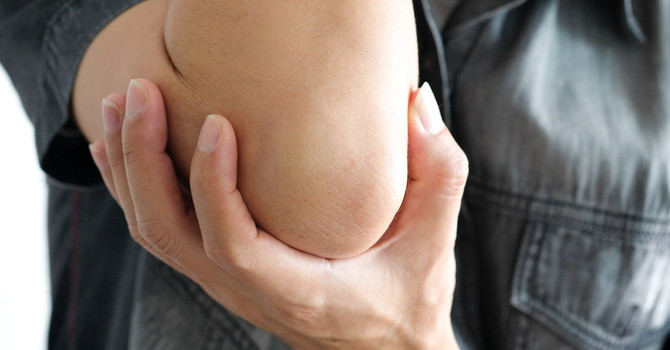
I often get youth baseball pitchers/throwers come in for examination and treatment of shoulder and elbow injuries. It has become quite a prevalent issue, so I spent a few weeks interviewing some of the local South Florida Experts in this field. The goal is to find out how to prevent these injuries before they become a major problem.
I was able to interview Orthopedic Surgeon Dr. Jonathan Hersch to discuss shoulder and elbow injuries. I then met with Bill Welle of XPE Sports Performance and Bill Schopp of the Jack Nicklaus Children’s Hospital Post-Injury Fitness and Throwing Program.
I was able to distill down some key points in preventing throwing injuries, as well as increase performance. Before we dive into those interviews, I want to discuss a couple of key aspects of the body that can help prevent over-use injuries.
Your body’s joints, starting from the foot to the wrist, alternate for the need of stability and mobility. Let’s start at the hip and point out at the below diagram that we need proper hip joint mobility and moving up we need proper Lumbar (Core) stability. Next is Thoracic spine mobility, cervical spine stability moving upwards. Moving outwards from the Thoracic Spine (not pictured), you need scapular (shoulder blade) stability, shoulder joint mobility, elbow stability and wrist mobility.
This kinetic chain of the body shows that what happens downstream can affect upstream in the body. For instance, if you have lack of proper hip stability, you will have to get that movement excessively from the Lumbar spine which causes low back injuries and such. This compensation pattern can happen in many places in the body and is a leading cause of overuse injuries. Many of our overhead sports and especially throwing injuries are due to physical dysfunctions in the lower body, core, scapula, etc.
For the shoulder function to be ideal during overhead throwing, the body needs to have proper mobility and stability where needed. More directly, if you lack Thoracic mobility, then that will negatively impact you scapular stability and shoulder joint mobility. This is a leading cause of shoulder and elbow injuries in pitchers and throwers.
This scenario of improper scapular stability leads me to the second concept I want to discuss before I dove into the interviews.
Your shoulder has 3 lines of defense when it comes to proper stability of the shoulder complex. First, you need proper Scapular stability as we discussed. Your second line of stability is rotator cuff stability which is for dynamic (movement based) stability. Lastly, your shoulder joint needs the stability of the labrum and ligaments.
If one of those lines of defense is weakened or dysfunctional, you will compensate and overload the next level of stability. For instance, many times pitchers will have lack of scapular stability which then puts excessive strain on the rotator cuff, and they then end up with a rotator cuff injury. If that is ignored long enough, they can then end up with a labrum injury or elbow injury. This can end up being a very substantial injury to a pitcher.
So, from a kinetic chain, body stand-point, making sure you have proper mobility and stability where needed will be instrumental in preventing injury and improving performance.
Interview 1: Jonathan Hersch MD
Dr. Hersch is a top Orthopedic Surgeon and is located in Boca Raton, FL. In my interview, I asked him a few key questions on injury prevention. One of those questions was about how to avoid shoulder and elbow injuries in youth pitchers.
Dr. Hersch’s Recommendations for Injury Prevention were:
o Avoid Year around baseball. Professional baseball players even take a few months off, and so should your youth baseball player. 3 months period off from overhead throwing. Showcases and multiple baseball leagues are preventing this much-needed rest.
- The elbow and shoulder weren’t made to throw a baseball with the velocity and movement that is required for pitching, so rest and recovery is a key aspect to preventing injuries.
- Avoid pitching with arm fatigue. Signs of arm fatigue are slower throwing speeds, decreased accuracy, more time needed between pitches.
- Monitor your child’s pitch count and utilize the Little League Guidelines
- Early specialization can be problematic for the youth athlete. Multiple sports is recommended.
- Youth pitchers should focus on the fastball, change up and throw with great accuracy. Then as they are physically mature, they can add other pitches.
The other question I asked Dr. Hersch was what are the most common injuries he sees in baseball pitchers.
He stated:
- 85% are Over-use injuries
- Most common injuries
- Elbow: ulnar collateral injury that many times requires Tommy John Procedure
- Shoulder: Tendonitis with underlying instability problem of shoulder causing secondary tendonitis, arthritis, spurring, cartilage damage to shoulder and elbow
- Labral tears, rotator cuff tears.
• MRI findings and surgery isn’t 100% the option, but in many cases, it may be warranted.
- Signs and symptoms of throwing injuries
• Arm pain as a thrower highly indicates arm pathology. When they are caught early, there is a good chance of getting it fixed easily.
• Many of the injuries on professional baseball pitchers stem from what they were doing as youth baseball pitchers.
Interview 2: Bill Welle and Bill Schopp
In my interview with these two gentlemen, I wanted to get the perspective of a strength and condition performance coach and a pitching/technique coach with a background in performance.
Bill Schopp
- Conditional movements based on position can cause issues. Technique changes in positions don’t translate to the mound. I found this interesting since I used to be a Shortstop that was also a Pitcher. My throwing mechanics at Shortstop were vastly different from pitching. Many position players who also pitch, carry their technique differences to the mound. Can be very harmful.
- Timing sequences: Most energy comes from hip separation and rotation, not the shoulder and arm.
- 58% of energy comes from hip rotation/lower body
- 95% of arm injuries come from premature torso rotation.
- Lower Extremity injury in the past can lead to upper extremity injury down the road
- Monitor number of throws per day, per activity and then per week. You cannot throw a baseball 7 days per week. If your child plays another position other than pitching, have them throw the balls into a bucket instead of back into the catcher or first base. This will help limit the number of total throws per week.
Bill Welle
- The deceleration aspect is key, and those decelerator muscles help achieve optimal rotational power.
- Proprioception and body weight exercises to build the foundation. Watch the interview video for a couple of exercises Bill describes.
- Squat movement as the foundation of movement in training. Make sure your athlete can squat properly, then build fitness and power onto that foundation.
- Single-Leg Row for single leg stability during push off phase of throwing. (See Video)
- Work on the rotator cuff, scapular stabilizers, hip stabilizers as key decelerators of the body.
- A baseball specific training program should include correctives and movement pattern exercises, not just strength and power training.
I took a lot out of my interviews with these experts, and if I had to boil it down to 4 key takeaways that you and I should take into deep consideration it would be the following:
1. Kids truly need an off-season. It is unfortunate that kids and parents feel forced into year-round baseball to keep up with the rest of the players and showcases. If you child rests and is talented, he will be better off for it in the long run. It won’t harm his chances of succeeding in baseball. Skill, determination, and health are the factors that allow for success.
2. One sport specialization at an early age is detrimental to the baseball player. At a certain teen age, it can be considered, but at an early developmental level, the athlete will gain many positive attributes from other sports. As well, playing only one sport will increase the risk of over-use strain and burnout.
3. Corrective Exercises and proper movement are necessary for the body to limit the chance of over-use injuries.
4. Communication between the parents and child on aspects such as points 1-3 above, fatigue, rest, and pain is vital in early detection and prevention of injury.
I hope you enjoyed this article on injury prevention for baseball pitchers and throwers. If you have any questions, please feel free to contact one of our doctors for a discussion.



